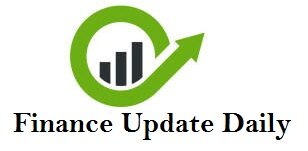In the world of financial markets, commodities trading stands out for its tangible assets such as gold, oil, and agricultural products. Within this realm, Contracts for Difference (CFDs) offer traders unique opportunities, particularly due to the concept of leverage. Commodities CFD trading involves speculating on the price movements of underlying commodities without owning the actual assets. Leverage plays a crucial role in enhancing both potential returns and risks associated with these trades. Understanding how leverage operates in this context is essential for any trader aiming to navigate this volatile yet potentially lucrative market.
Understanding Leverage
Leverage allows traders to control a larger position in the market with a relatively smaller amount of capital. It works by borrowing funds to increase the potential return on investment. There are primarily two types of leverage used in trading: margin-based leverage and notional-based leverage.
Margin-based leverage involves using borrowed funds from a broker, while notional-based leverage refers to the ability to control a larger position size than the initial investment suggests. In commodities CFD trading, leverage amplifies gains when prices move favourably but also magnifies losses if the market moves against the trader.
Introduction to Commodities CFD Trading
Commodities CFDs provide traders with the opportunity to speculate on the price movements of commodities without owning the physical assets. This form of trading is popular due to its flexibility, allowing traders to profit from both rising and falling markets.
Key characteristics of commodities CFDs include high liquidity, as these contracts are based on actively traded commodities. They also offer leverage, enabling traders to enter larger positions with a smaller initial investment compared to traditional commodity trading. For example, traders interested in oil CFD trading can refer toa UK Oil price chartand utilize CFDs to track and predict fluctuations in the price of crude oil.
The Role of Leverage in Commodities CFD Trading
Leverage in commodities CFD trading allows traders to access larger market positions with less capital upfront. For instance, a leverage ratio of 1:50 means that for every $1 invested, the trader can control $50 worth of commodities. This leverage ratio significantly increases profit potential, as even small price movements can lead to substantial gains. In contrast to traditional commodity trading, where large amounts of capital are required to control sizable positions, CFDs provide a more accessible entry point for retail traders.
Benefits of Leverage in Commodities CFD Trading
The primary benefit of leverage in commodities CFD trading is the ability to amplify potential returns. Traders can achieve higher profits compared to their initial investment, making it an attractive option for those looking to maximize gains from small price movements. Additionally, leverage in commodities CFDs offers portfolio diversification opportunities. Traders can gain exposure to various commodities markets without having to purchase physical assets, thereby spreading risk across different sectors.
Access to larger market positions with less capital is another significant advantage of leverage. This allows traders to capitalize on trading opportunities they might not otherwise afford in traditional markets.
Risks Associated with Leverage in Commodities CFD Trading
While leverage enhances profit potential, it also significantly increases the level of risk. The magnification of losses is a critical concern in commodities CFD trading. If the market moves against the trader, losses can exceed the initial investment, leading to margin calls and potentially forced liquidations of positions.
Market volatility is another risk factor exacerbated by leverage. Price fluctuations in commodities markets can be swift and substantial, amplifying both gains and losses. Effective risk management strategies are crucial to mitigate these risks.
Factors Influencing Effective Use of Leverage
Successful utilization of leverage in commodities CFD trading requires a deep understanding of market conditions. Traders should analyze supply and demand dynamics, geopolitical factors, and economic indicators that impact commodity prices. Setting realistic trading goals is essential when employing leverage. Traders must have a clear understanding of their risk tolerance and financial objectives to avoid overexposure and potential losses.
Implementing robust risk management strategies is paramount. Techniques such as setting stop-loss orders, diversifying portfolios, and limiting leverage ratios can help traders safeguard their investments in volatile markets.
Regulation and Leverage Limits
Regulatory oversight of leverage in commodities CFD trading varies across jurisdictions. Regulatory bodies impose leverage limits to protect retail investors from excessive risk. Recent changes in leverage requirements have aimed to standardize practices and enhance transparency in the financial markets.
These regulations have significant implications for traders and brokerage firms, influencing trading strategies and operational processes. Adhering to regulatory guidelines ensures compliance and fosters a fair and orderly trading environment.
Conclusion
In conclusion, leverage plays a pivotal role in commodities CFD trading, offering traders the potential for increased profits and portfolio diversification. However, it also introduces significant risks that must be carefully managed through effective strategies and compliance with regulatory frameworks. Understanding how leverage operates, its benefits, risks, and regulatory implications is essential for traders looking to navigate the complexities of commodities CFD markets.
